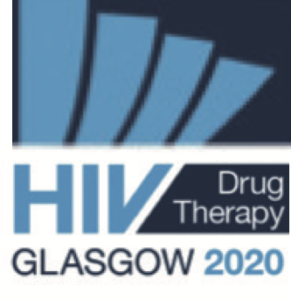EACS guidelines updated (v.10.1) for Glasgow conference
14 October 2020. Related: Conference reports, Guidelines, HIV 15 Glasgow 2020.
 Simon Collins, HIV i-Base
Simon Collins, HIV i-Base
The latest update to the EACS HIV guidelines (version 10.1) is now available (English version), with minor updates to all sections.
They are available as a free app, an interactive web version and as an online PDF.
A useful five minute YouTube introduction is also online:
https://www.youtube.com/watch?v=MwLBoy12cZ0
The main changes in each section are included below.
ART section
- First-line combinations are now categorised as ‘recommended’, ‘alternative’ and ‘other’.
- Recommended regimens include unboosted INSTI (DTG, BIC or RAL) plus 2 NRTIs or the dual combination 3TC/DTG (which no longer has a CD4 restriction].
- Dual DRV/b + DTG is now included as a switch option.
- Recommendations for viral failure is now: “New regimen will usually use at least one fully active PI/b (e.g. DRV/b) plus a drug remaining fully active despite resistance to other drugs from the class (e.g. INSTI, NNRTI) and/or from a class not used previously (e.g. INSTI, NNRTI, PI, CCR5 antagonist (if tropism test shows R5 virus only) assessed by genotypic testing”.
- TAF is now allowed for women who become pregnant while on ART.
- TAF/FTC+DTG is now included as a recommended regimen for ART-naïve pregnant women.
- Alternative PEP drugs now include DRV/b and drop AZT/3TC.
Drug-drug interaction (DDI) section
All tables include changes in the HIV drug interaction website (University of Liverpool).
- EFV + atorvastatin: changed to amber due to the decrease in atorvastatin exposure requiring the monitoring of lipid values.
- RPV + chloroquine, methadone or pimozide were changed to amber due to the known risk for QT interval prolongation associated with the comedication.
- A note on the risk of DDI with ibalizumab has been added to the footnote of each DDI table.
- Ibalizumab has been added in the table for people with swallowing difficulties and the tables for dose adjustment in case of renal and hepatic impairment.
Co-morbidity section and complications
- Increased risk of neural tube defects associated with DTG.
- An HIV-specific reference has been included for the PCSK9 inhibitor, evolocumab.
- An indication to intervene if BMI ≥ 30 kg/m2 or ≥ 25 kg/m2 and weight-related complications (diabetes mellitus, hypertension) with expanded detail regarding exercise, dietary, behavioural and therapeutic management.
- In sero-discordant couples, fully effective ART should be a primary goal. If not achieved, PrEP can be used if the couple are looking to conceive.
- In PLWH at high risk of STI, three-monthly STI screening is recommended.
- Treatment for gonorrhoea has been updated to single dose ceftriaxone 1g IM.
Viral Hepatitis Co-infections section
- Updated tables on HCV treatment and DDIs.
- Resistance testing guidance before re-treatment with DAAs has been modified.
- No changes in sections on HBV, HDV and HEV.
Opportunistic Infections section
- Minor stylistic changes were made to all OI tables.
- Cidofovir was deleted as secondary prophylaxis/maintenance therapy for CMV.
- Rifabutin was added to the list of drugs for primary prophylaxis of Non-Tuberculosis Mycobacteria.
- Moxifloxacin was added to the list of drugs for treatment of MAC.
Reference
- EACS Guidelines 2020. (October 2020).
https://eacs.sanfordguide.com - https://www.eacsociety.org/guidelines/eacs-guidelines/eacs-guidelines.html
This report was first published online on 5 October 2020.

